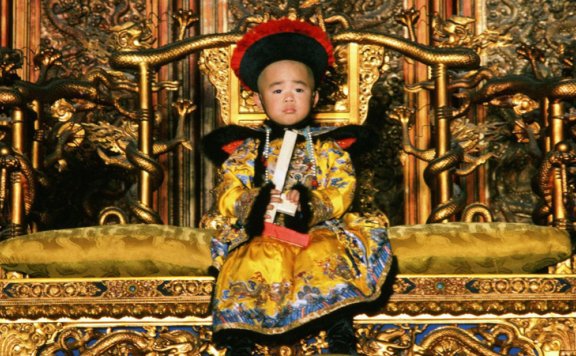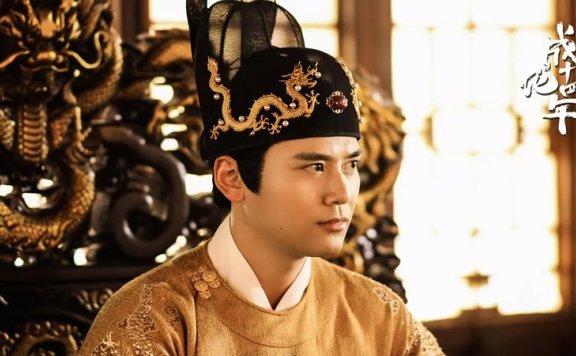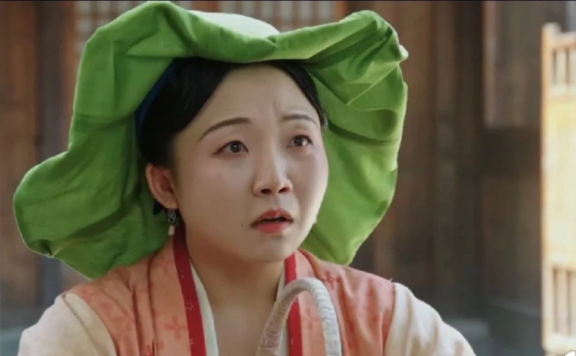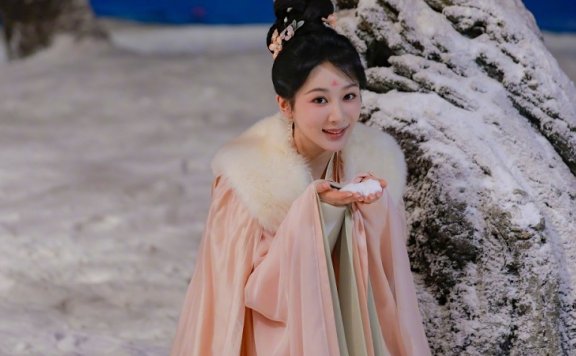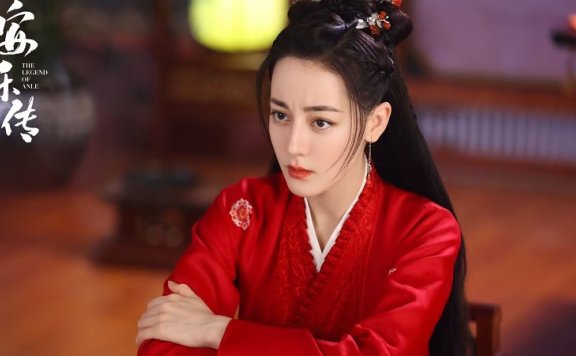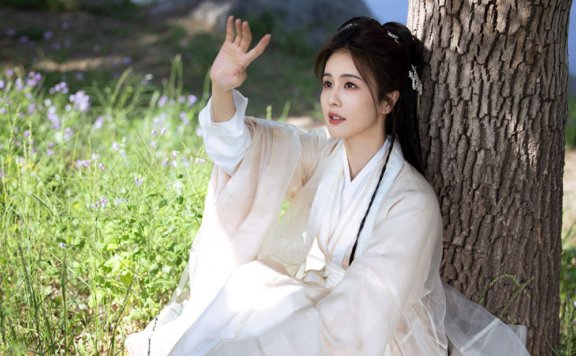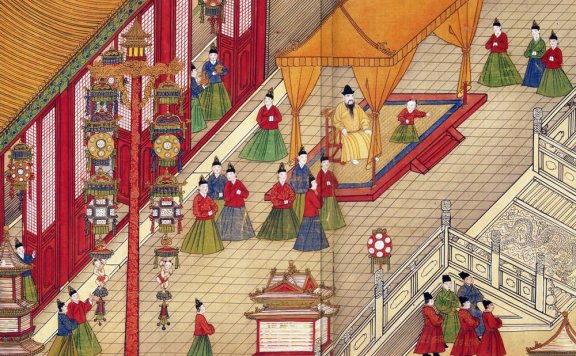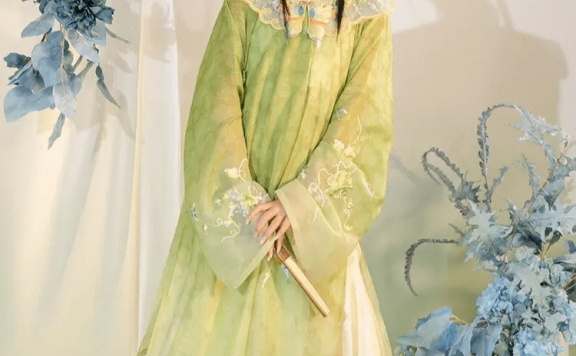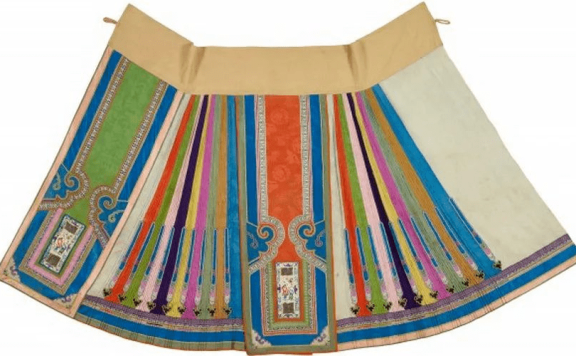Article
搜索结果:
-
From Forbidden City to Screen: Qing Dynasty Sagas Reimagined
In 1644, as the Ming Dynasty's fading glory shattered beneath peasant uprisings and Manchu cavalry, a steppe chieftain's descendant named Nurhaci's dream materialized. His descendants crossed the Great Wall, founding the Qing Dynasty (1644–1912), a realm where Manchurian martial vigor entwined with Confucian statecraft to forge China's final imperial colossus. Spanning nearly three centuries, this era fused conquest and cosmopolitanism, its legacy echoing through jade-adorned palaces and blood-soaked battlefields alike. The Qing is framed by its zenith under Kangxi and Qianlong, and its unraveling in the 19th century's opium-hazed twilight. From the Treaty of Nerchinsk to the Boxer Rebellion's flames, the dynasty oscillated between global engagement and xenophobic isolation. Beneath the Forbidden City's gilded roofs, empresses plotted behind silk curtains, Han literati navigated Manchu rule, and eunuchs wielded shadows as currency. Yet beyond the palace walls, a multicultural tapestry thrived—Jesuit astronomers mapped stars, Mongol khans swore fealty, and Cantonese merchants traded tea for silver. Let us enter a world where dragon robes conceal daggers, and every courtyard murmurs with ambition. Follow the Kangxi Emperor, a boy-king who tamed regents and rebels to become Asia's longest-reigning monarch. Ride with the feared Eight Banners across Tibetan plateaus, and walk the Guangzhou docks… -
7 Must Watch Ming Dynasty Dramas
The Ming Dynasty (1368–1644) stands as one of China's most transformative and culturally vibrant eras, bridging medieval traditions with early modern innovations. Founded by Zhu Yuanzhang, a peasant-turned-emperor who overthrew the Mongol-led Yuan Dynasty, the Ming restored Han Chinese rule and established a centralized bureaucracy that shaped governance for centuries. Its name, meaning "brilliant splendor," reflects both its aspirations and contradictions: a period of monumental achievements in art, technology, and global trade, yet also marked by political intrigue, social upheaval, and eventual collapse. Ming-era dramas often explore themes of loyalty, ambition, and resilience. The dynasty's complexity—its blend of intellectual enlightenment and authoritarian control—offers fertile ground for narratives about power's corrupting influence and the human cost of progress. Whether depicting palace conspiracies, military strategists outwitting invaders, or merchants navigating Silk Road rivalries, these stories resonate with universal questions about leadership and morality. Ming Dynasty in 1566 大明王朝1566 Set during the twilight years of Emperor Jiajing's reign (1521–1567), Ming Dynasty in 1566 is widely regarded as a masterpiece of historical drama for its unflinching portrayal of political decay and moral ambiguity in late Ming governance. The series centers on the interplay between three power factions: the corrupt Grand Secretariat led by Yan… -
Best 6 Han Dynasty Historical Dramas List
In 202 BCE, as the ashes of the Qin Dynasty settled, a former peasant-turned-warlord named Liu Bang seized power, founding the Han Dynasty (202 BCE–220 CE). This four-century reign became the cornerstone of Chinese civilization, blending Qin's centralization with Confucian humanism to create an enduring blueprint for empire. Han is divided into the Western Han and Eastern Han periods. The Yellow Turban Rebellion ignited chaos by the 2nd century CE (the late Eastern Han), fracturing the empire into the warring Three Kingdoms era the late Eastern Han. Under the Han, China expanded into a multicultural superpower: Emperor Wu's cavalry crushed the Xiongnu nomads, Zhang Qian's Silk Road missions bridged Asia with Rome, and scholars like Sima Qian wove history into timeless literature. Yet the Han's brilliance was shadowed by intrigue—palace conspiracies, regent dictatorships, and the rise of eunuch factions that corroded the court. Let us step into sweeping historical dramas where ambition and idealism collide. Witness the rise of Liu Bang, the "Emperor of the Commoners," as he transforms from a drunken village chief to a visionary ruler. Feel the thunder of hooves as General Wei Qing smashes through Mongol hordes, and trace the quiet revolution of Confucian scholars who… -
A New Gothic Thriller: Chronicles of the Morning Snow
Period dramas have leveled up lately. Gone are the days of cheap-looking costumes and flimsy sets—today's productions are all about immersive details. But Chronicles of the Morning Snow (朝雪录) isn't just another pretty historical show. It's a spine-chilling dive into "Chinese Gothic" horror, blending eerie crime scenes, razor-sharp storytelling, and a slow-burn romance. Trust me, this iQiyi exclusive is the dark horse of 2025—and here's why it's worth the hype. A Plot That Grips Like a Nightmare Adapted from the hit novel The Imperial Coroner's Justice, the series opens with Qin Wan (Li Land, 李兰迪), a timid noblewoman in the Qin household. Bullied and overlooked, she's the last person you'd expect to dissect corpses. But after her father's sudden death—a man who quietly solved crimes through forensic science—Qin Wan undergoes a radical transformation. Overnight, she becomes a sharp-witted investigator, using her father's techniques to speak for the dead. Her first case? The infamous Headless Bride Murders, where a noblewoman's decapitated body is found draped in a blood-red wedding gown. The crime scene—a dimly lit ancestral hall with incense smoke curling around severed jade bracelets—sets the tone for the show's unflinching style. This isn't sanitized crime-solving; it's visceral, haunting, and steeped… -
Song Zu'er's Supernatural Love Story That's Already Breaking Records
Get ready to binge Wuyou Du (无忧渡, No Worries Crossing), the hottest Chinese fantasy drama of 2024. Starring Ren Jialun (One and Only) and Song Zu'er (Nirvana in Fire), this series blends ghostly mysteries, forbidden romance, and Chinese-style horror into a wild ride that's part Supernatural, part In the Mood for Love. And guess what? It just dropped all episodes on iQiyi. Set in a world where humans and demons coexist, the show follows Xuan Ye (Ren Jialun), a half-demon exorcist cursed by his bloodline, and Ban Xia (Song Zu'er), a wealthy heiress who can see spirits. When Ban Xia exposes her sister-in-law as a demon, she's thrust into a shadowy war between clans—and stuck teaming up with the brooding Xuan Ye to survive. Why This Isn't Your Grandma's Ghost Story Forget jump scares and creaky doors. Wuyou Du leans into eerie Chinese folklore with five standalone cases. Here's a taste: "The Bride's Shadow": A newlywed's shadow moves on its own, leading to a demonic ritual involving paper frogs and a killer who… collects throats. "The Ageless Pear": Women eat magical pears to regain youth—but end up as desiccated corpses. The twist? The pear tree feeds on their regrets. "The… -
China's Fantasy Drama Finally Gets It Right
If you've ever dipped your toes into Chinese fantasy dramas, you probably know the struggle: they often feel like a mixed bag. And yet, we keep watching. The pull of traditional Chinese fantasy is strong—even after 100 disappointments, we'll still click on the 101st one hoping for something special. To everyone who's been holding out for a miracle: it's here. Busi Yi: Strange Tales (不思异:志怪) is a low-budget web drama with no big stars, no trending hashtags, and no marketing push. But somehow, it nails what so many high-budget dramas miss—style, substance, and that elusive "right vibe" for Chinese supernatural stories. The Aesthetic We've Been Waiting For Set in a mysterious town plagued by spirits and demons, Busi Yi: Strange Tales follows a monster-hunting squad led by Wu Jin, a former general who gains powers from the Moon Tribe. Alongside him are Yu Hui, the son of an old friend; Shui Yao, a rival-turned-ally; Li Yan, a quiet scholar; and Song Zhiru, a savvy innkeeper. Each episode pits them against strange beings—some malicious, some misunderstood—all while their own backstories start to unravel. What stands out first isn't the plot—it's the atmosphere. This show understands that fantasy isn't just about magic;… -
Move Over, Heroic Tropes: The Wuxia Comedy That's Actually Funny
Let's face it: Most martial arts dramas take themselves way too seriously. Flowing robes, brooding heroes, and speeches about honor get old fast. But Xia Ke Xing Bu Tong (侠客行不通, lit. Heroism Doesn't Work) , a raucous new comedy streaming on Tencent Video, flips the script. Starring standup comic Xu Zhisheng (徐志胜) as a bumbling "anti-hero," this show isn't just poking fun at wuxia clichés. It's skewering modern bureaucracy, workplace politics, and the absurdity of trying to be noble in a world that rewards schemers. And guess what? It's hilarious. The Villain Is the Hero Meet Gou Lingfeng (Xu Zhisheng), a rich kid with a heart of gold… and a face only a mother could love. After his nanny is killed by a demonic cult, he vows to become a hero. But here's the catch: His "master", a doddering old man who crashes into his mansion one night, accidentally trains him in forbidden dark arts (mo gong 魔功). Fast-forward 18 years. Gou descends the mountain, ready to save the world… only to learn that heroism now requires a government license. To legally fight evil, he must pass exams held by the Martial Heroes Alliance (武林侠会), a corrupt guild more interested… -
The Large-Sleeved Hanfu Shirt in Tang Dynasty
The Large-sleeved shirt, known as "Da Xiu Shan" in Chinese, was a prominent aristocratic attire during the mid to late Tang Dynasty. This garment is often associated with the famous painting "Court Ladies Wearing Flowered Headdresses" by Zhou Fang, which vividly depicts noblewomen adorned in ankle-length skirts paired with sheer, large-sleeved gauze shirts that delicately cover their shoulders and arms. The artist's realistic portrayal not only captures the transparency of Tang fabrics but also the softness of the women's skin. This style persisted until the late Ming Dynasty, often paired with a ceremonial cape, and was alternatively called "Da Xiu" or "Da Shan." During the High Tang period, the influence of Hu (nomadic) clothing waned, and women's fashion gradually embraced wider sleeves. By the mid to late Tang era, sleeves often exceeded four feet in width. The attire typically included a wide-sleeved cross-collared shirt, long skirt, and a draped shawl, reserved for significant occasions like court appearances, ceremonies, and weddings. Adorned with golden hairpins and floral decorations, it was also referred to as "Floral Hairpin Large-Sleeved Shirt." Zhou Fang's painting, now housed in the Liaoning Provincial Museum, illustrates noblewomen leisurely strolling through gardens, picking flowers, and playing with butterflies. Their… -
The Traditional Chest Wrap Dress in Historical Dramas
The traditional chest wrap dress, once a staple in early historical dramas and photo studios, has become increasingly rare in contemporary films and TV shows. Why is this the case? Let's start with the conclusion. Many people refer to it as the "Hezi dress." Today, there are numerous choices when it comes to clothing styles and patterns, so there's no need to obsess over controversial designs like the Hezi dress. Absence of Physical Evidence First, there is no physical evidence to confirm the exact style of the Hezi dress. Its existence is only hinted at in literature, particularly through mentions of its key component, the "Hezi." Second, the most famous depiction of the "Hezi dress" is in Zhou Fang's painting "Court Ladies Wearing Flowered Headdresses," which is believed to date back to the Five Dynasties period. The term "Hezi dress" is a modern invention, as it does not appear in historical records. Although "The Complete Collection of Chinese Textiles and Costumes" mentions the long wrap dress worn by women in the painting, paired with a thin gauze robe, it does not refer to it as the "Hezi dress." Historical Origins of Hezi The Hezi dress was once a popular representation… -
Why Chinese Zhaiyi Appears in Korean Dramas
In the Korean drama 'Won Kyung,' Queen Won Kyung is seen wearing a full set of Zhaiyi (翟衣), along with a Yanju crown (燕居冠) adorned with Bobin (博鬓), which is typically reserved for empresses or crown princesses. Observant viewers might find this attire familiar. In recent years, Zhaiyi has frequently appeared in Chinese historical dramas set in the Song and Ming dynasties, largely because well - preserved portraits of empresses from these periods provide ample reference material. The 'Zhai' in Zhaiyi refers to the Zhai pattern (翟纹), which features the Chinese pheasant (红腹锦鸡), a bird native to China with vividly colored feathers described as 'red with five hues.' The pattern consists of twelve pairs of pheasants arranged in rows, interspersed with small floral motifs called 'Xiaolunhua' (小轮花) in the Ming dynasty. The headdress also follows a strict hierarchy: the phoenix crown (凤冠) with Bobin is the highest rank, paired with Zhaiyi, while the Yanju crown (with Bobin) is worn with a yellow Dasha (大衫) and Xiapei (霞帔). Noblewomen's Zhai crowns are paired with red Dasha and matching Xiapei. Why does Zhaiyi appear in Korean dramas? The 'Goryeo History' records that Empress Xiaoci of the Ming dynasty once bestowed Zhaiyi upon… -
The Lotus Leaf Hats in Cdrama
If you think lotus leaf hats are a modern trend, our ancestors would surely laugh at you: "You kids are so outdated and unfashionable!" This iconic headwear dates back much earlier than you might imagine, with roots tracing to the Northern and Southern Dynasties. Historical records like "The History of the Northern Dynasties" mention bearers wearing them in summer, while "Tales of the Hidden World" from the Liu Song Dynasty recounts a sorcerer tricking a governor into wearing a magical lotus hat that later revealed its true form, astonishing everyone. The most vivid depiction appears in Ming Dynasty painter Qiu Ying's "Assembly of the Immortals," showcasing an immortal wearing an identical lotus leaf hat. Nature has always been the muse for innovation. Later adaptations led to rounded hats with varying materials—felt caps from wool, blended silk - wool Diexiao hats, and pure silk variants. The key difference lay in "dyed silk replacing wool," as noted in historical texts. This accessory became a cinematic staple too, like Yang Fangbing's portrayal of Yang Guifei, whose hat dripped with pearl strands resembling dewdrops on lotus leaves. Among the Yi ethnic group in Sichuan's high - altitude Meigu County, married women wear similar hats… -
Why Are Off-Shoulder Outfits Rare in Historical Cdramas?
In the past, historical dramas often featured costumes with large necklines, resembling an ancient version of 'deep V-necks.' But were such off-shoulder outfits truly worn in history? And why are they less common in modern productions? There were indeed similar styles, at most revealing the neck. Historical artifacts like the murals from Xu Xianxiu's tomb and figurines from the Wei-Jin period might give the impression of off-shoulder outfits. However, these were typically layered with undergarments beneath the outer robe. For instance, during the Northern and Southern Dynasties, the 'Da Xiu Ru' (大袖襦) was popular. This style, often seen in figurines, featured wide sleeves, though only sleeve fragments have been unearthed so far. Based on these artifacts and the characteristics of 'Ru,' scholars have reconstructed how the Da Xiu Ru might have looked, with variations in neckline size. Notably, figurines wearing such large-neckline outfits invariably have a circular or horizontal line around the neck, representing the collar of an undergarment or 'Liang Dang' (裲裆). By the Southern Dynasties, waistlines of skirts rose to the chest, while some upper garments retained the Da Xiu Ru style. The necklines during this period resembled modern cinematic effects, barely revealing the collarbone. However, achieving the… -
Yang Zi's Top 5 Costume Works Recommendations
If you've ever wondered how Chinese mythology, history, and fantasy collide on screen, Yang Zi's (杨紫) costume dramas are the perfect starting point. Take Ashes of Love, where she plays Jin Mi, a flower deity navigating love and betrayal across celestial realms. The series doesn't just romanticize immortality; it dissects the consequences of emotion-suppressing poisons and divine politics. Or consider Flourished Peony, where her stoic swordswoman Lu Xueqi battles sect rivalries in a world where loyalty clashes with ambition. Yang Zi's characters aren't just "strong"—they're layered, flawed, and rooted in specific eras, from the Tang Dynasty's perfume trade (Flourished Peony) to mythological clan wars (Lost You Forever). Here's a curated guide to Yang Zi's most iconic costume works. Lost You Forever 长相思 Aired: 2023 Period Background: Mythological era inspired by ancient Chinese legends. Genres: Xianxia, romance, political intrigue. Main Roles: Yang Zi as Xiao Yao, a resilient princess; co-stars Deng Wei (邓为) and Zhang Wan Yi (张晚意). Adapted From: Tong Hua's novel of the same name. Xiao Yao's story begins in tragedy—after losing her royal status and memories, she reinvents herself as Wen Xiao Liu, a rough-edged healer in Qing Shui Town. Her life intertwines with four men, each representing… -
Dilraba's Top 5: Cdrama Queen's Greatest Hits
Dilraba Dilmurat (迪丽热巴) has redefined versatility in Chinese costume dramas, seamlessly shifting from mischievous fox spirits to battle-hardened warriors. Her ability to anchor fantastical plots with emotional authenticity makes her a standout in the genre. Take The Long Ballad: As Li Changge, she delivered a masterclass in restraint, whether strategizing siege defenses or silently mourning her family's massacre. In Eternal Love of Dream, she balanced Bai Fengjiu's whimsy with grit, turning a lovestruck princess into a symbol of resilience. These roles aren't just performances—they're blueprints for how modern xianxia and historical dramas can prioritize character over spectacle. Below, we break down five dramas that showcase her range, each distinct in tone yet unified by her magnetic presence. Eternal Love of Dream 三生三世枕上书 Aired: 2020 Period Background: Mythological fantasy world spanning three lifetimes. Genres: Romance, Fantasy, Xianxia. Main Roles: Dilraba as Bai Fengjiu, a nine-tailed fox princess; Gao Weiguang as Dong Hua Dijun. Adapted From: Tang Qi Gongzi's novel Three Lives, Three Worlds: The Pillow Book. Spanning three lifetimes, Eternal Love of Dream follows Bai Fengjiu, a fiery nine-tailed fox princess from the Qingqiu fox tribe, as she relentlessly pursues Dong Hua Dijun, an ancient deity who sacrificed his emotions to… -
Bai Lu's Top 5 Cdrama Masterclass
Bai Lu's (白鹿) rise in costume dramas isn't just about beauty—it's a masterclass in versatility. From the tender restraint of a noblewoman to the fiery swagger of a rebel queen, she molds each role into something unforgettable. Take The Journey of Chong Zi: her character Cui Shiyi, a reserved heiress bound by tradition, contrasts sharply with The Legends of Lu Zhaoyao, a leather-clad warlord who smirks while swinging a sword. Even within a single series, like Song of Youth, she shifts seamlessly from Ming-dynasty elegance in embroidered silk to comedic chaos in slapstick disguises. Her secret? She leans into extremes. In The Legends, a crimson robe and unapologetic red eyeliner scream "villainess," while in Court Lady, a single red-dress dance scene—all swirling sleeves and defiant glances—cements her as the queen of physical storytelling. No two roles blur; each is a bold, deliberate stroke on a growing canvas of reinvention. This article highlights her top works, blending rich storytelling, cultural depth, and performances that transcend language barriers. One and Only 周生如故 Aired: 2021 Period Background: Set in a fictional dynasty mirroring the Northern and Southern Dynasties (420–589 CE), a turbulent era marked by fractured kingdoms, military coups, and rigid Confucian social… -
Cheng Yi's Triple Role and the Reinvention of Wuxia Drama
The Chinese entertainment landscape is witnessing a resurgence of wuxia dramas, and Fu Shan Hai (赴山海, translated as To the Mountains and Seas) stands at the forefront of this revival. Slated for a 2025 release on Dragon TV (东方卫视), this 40-episode series adapts Wen Rui'an's iconic novel Legendary Heroes of the Land (神州奇侠), blending classic Jianghu themes with time-travel twists and Gen-Z sensibilities. Starring Cheng Yi (成毅), Gulnazar (古力娜扎), and a powerhouse supporting cast, the drama has already generated buzz for its ambitious storytelling, meticulous production, and Cheng Yi's career-defining triple role. Plot & Innovation: Bridging Generations The series follows Xiao Mingming, a disillusioned modern-day office worker who accidentally slips into the martial arts novel he's editing, embodying its protagonist, Xiao Qiushui. From a bumbling novice to a hero defending his nation, Xiao's journey intertwines workplace disillusionment with classic wuxia tropes—think The Matrix meets Condor Heroes. This meta-narrative injects "anti-burnout" themes resonating with younger audiences while preserving the genre's core values of loyalty and justice. On one hand, it retains the classic tropes that fans of the genre have come to love—righteous warriors, enigmatic enemies, and dramatic showdowns. On the other, it subtly incorporates elements of modern storytelling, such as… -
China's Hanfu Industry Consumer Analysis
1. Public Awareness of Hanfu and Brand Recognition According to a research report by Jingzhi, public understanding of Hanfu varies significantly. Specifically, 45.9% of respondents reported a "good understanding" of Hanfu and could identify its basic styles; 43.1% had a "general familiarity"; while only 11.0% claimed limited or no knowledge. Geographically, residents of first-tier cities (e.g., Beijing, Shanghai, Guangzhou, Shenzhen), new first-tier cities, and second-tier cities demonstrated higher awareness, attributable to these regions’ strong cultural environments, rapid information dissemination, economic development, and greater demand for cultural consumption. Regarding brand recognition, despite rapid market growth in recent years, overall brand awareness remains relatively low. Apart from leading brands like Han Shang Hua Lian, Chong Hui Han Tang, and Shi San Yu, most Hanfu brands still struggle with visibility. This is largely due to the industry’s early-stage development, fragmented market structure, and the absence of dominant brands with broad influence. Additionally, limited marketing efforts—primarily relying on social media and word-of-mouth—restrict brand exposure. 2. Channels of Exposure and Hanfu Usage Scenarios Key channels for learning about Hanfu include historical dramas (59.3%), social media (54.7%), Hanfu cultural clubs (49.1%), historical literature (40.7%), and museum exhibitions (38.8%). Historical dramas visually showcase Hanfu’s elegance through intricate… -
The Hidden Language of Mamianqun Embroidery
Every stitch on a horse-face skirt whispers secrets. For centuries, Mamianqun artisans encoded cultural values, social status, and cosmic beliefs into embroidered motifs, transforming fabric into a visual lexicon. These symbols—ranging from imperial dragons to humble butterflies—reveal how clothing became a canvas for China’s collective imagination. Imperial Dragons and Cosmic Order The dragon motif, reserved for royalty and high-ranking officials, evolved dramatically between dynasties. Ming-era Mamianqun featured five-clawed dragons (long) encircling skirt panels, their bodies coiled in perfect Fibonacci spirals to represent celestial harmony. A 1589 imperial consort’s skirt in the Forbidden City archives shows dragons chasing pearls amid cloud bands, symbolizing the emperor’s mandate from heaven. Qing artisans reimagined this motif under Manchu rule. Horse-face skirts for nobility incorporated mang dragons—four-clawed hybrids blending dragon and serpent features—to subtly assert Manchu identity. The 1783 “Dragon-Tide” skirt commissioned by Empress Dowager Chongqing pairs mang dragons with crashing waves, a nod to Qing naval ambitions. Floral Codes – From Peonies to Lotus Flowers served as social shorthand. Ming commoners favored peonies embroidered in indigo thread, their layered petals symbolizing wealth accumulation. Nobility preferred lotus motifs in silver-gilt thread, each flower’s eight petals mirroring the Bagua trigrams. A surviving Qing-era horse-face skirt from Suzhou tells a marital story through flora: pomegranates… -
Crafting a Traditional Horse-Face Skirt – Threads of Time and Technique
To create a traditional horse-face skirt is to converse with centuries of artisans. This process, honed during the Ming Dynasty and refined in the Qing era, transforms raw fabric into a cultural statement. Far from a simple garment, each skirt embodies calculated geometry, symbolic motifs, and generational wisdom—a wearable archive of Chinese craftsmanship. Material Selection Traditional skirts begin with fabric choices steeped in regional logic. Ming artisans preferred luo silk, a lightweight yet durable weave that allowed pleats to hold their shape without stiffness—ideal for Jiangnan’s humid climate. Qing tailors often opted for kesi tapestry silk for outer panels, its slit-tapestry technique enabling photorealistic embroidery. Modern recreations face ethical dilemmas: while purists source wild mulberry silk from historic Zhejiang farms, eco-conscious brands like Vermillion Phoenix now use organic hemp dyed with tea leaves to mimic antique hues. Pattern Drafting: Geometry in Service of Grace The four-panel template follows strict proportional rules. A typical Ming skirt for a woman of 165cm height requires: Two outer panels: 50cm wide x 105cm long Two inner panels: 30cm wide x 105cm long Waistband: 8cm wide x 110cm (allowing overlap) Historic pattern books like the Yuanyang Pu (1627) reveal secret adjustments: a 3° outward flare on outer panels to enhance the “horse face”… -
Ming vs. Qing Dynasty Horse-Face Skirts
The horse-face skirt’s journey through China’s dynastic eras reveals not just changing aesthetics but seismic cultural shifts. Between the Ming and Qing dynasties, this iconic garment transformed from a study in Confucian restraint to a manifesto of imperial grandeur, mirroring the philosophical and political currents that reshaped the nation. Ming Dynasty: Elegance Through Restraint The Ming era (1368–1644) elevated simplicity to an art form. Horse-face skirts from this period favored clean lines and subtle symbolism, reflecting the dynasty’s revival of Han Chinese traditions after Mongol rule. Dominated by solid hues like indigo, russet, and ivory, these skirts derived beauty from precision tailoring rather than overt decoration. The most elaborate Ming examples featured narrow lan (襕)—decorative bands at knee level—embroidered with understated geometric patterns or small floral motifs. A mid-16th century skirt from a Nanjing tomb exemplifies this ethos: its unbleached hemp fabric bears a single band of silver-thread cloud designs, a nod to scholarly ideals of humility and harmony with nature. Qing Dynasty: Opulence as Political Language With the Manchu conquest in 1644, the horse-face skirt became a battleground for cultural negotiation. Qing rulers preserved the Han garment’s structure but infused it with nomadic sensibilities. Skirts exploded with color, featuring entire landscapes…
